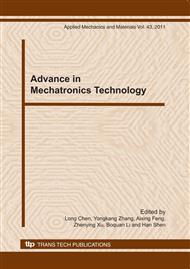p.247
p.253
p.257
p.262
p.269
p.274
p.279
p.283
p.288
Surface Roughness Prediction of Engineering Ceramics Electro-Spark Machining Based on Rough Set Neural Network
Abstract:
To solve the problem of difficulty in establishing the mathematical model between process parameters and surface quality in the process of engineering ceramics electro-spark machining, a neural network relational model based on rough set theory is presented. By processing attribute reduction from data sample utilizing rough set theory, defects like bulkiness of neural network structure and difficult convergence etc are aovided when input dimensions is high. A prediction model that a surface roughness varies in accordance with processing parameters in application of well structured neural network rough set is established. Study result shows that utilizing this model can precisely predict surface roughness under the given conditions with little error which proves the reliability of this model.
Info:
Periodical:
Pages:
269-273
Citation:
Online since:
December 2010
Authors:
Price:
Сopyright:
© 2011 Trans Tech Publications Ltd. All Rights Reserved
Share:
Citation:


